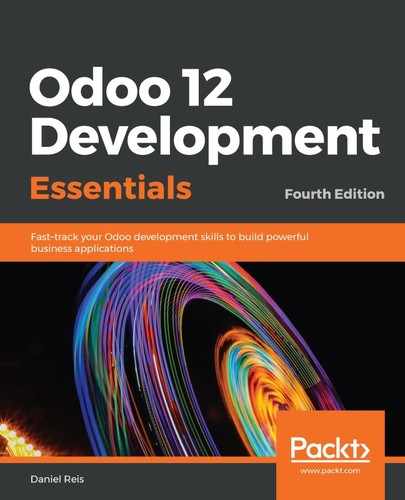Book Description
Extend your skills with Odoo 12 to build resourceful and open source business applications
Key Features
- Explore Odoo 12 capabilities to develop business applications
- Program business logic and manipulate data to implement specific business rules in your applications
- Integrate Python APIs for building customizable and scalable business logic
Book Description
Odoo is one of the best platforms for open source ERP and CRM. Its latest version, Odoo 12, brings with it new features and updates in Python packages to develop more customizable applications with additional cloud capabilities.
The book begins by covering the development essentials for building business applications. You will start your journey by learning how to install and configure Odoo, and then transition from having no specific knowledge of Odoo to being ready for application development. You will develop your first Odoo application and understand topics such as models and views. Odoo 12 Development Essentials will also guide you in using server APIs to add business logic, helping you lay a solid foundation for advanced topics. As you progress through the chapters, you will be equipped to build and customize your applications and explore the new features in Odoo 12, such as cloud integration, to scale your business applications. You will get insights into building business logic and integrating various APIs into your application.
By the end of the book, you will be able to build a business application from scratch by using the latest version of Odoo.
What you will learn
- Manage Odoo server instances
- Create a new Odoo application from scratch using the most frequently used elements
- Develop new models and use inheritance to extend existing models
- Use ORM methods in the Odoo server and from external clients
- Create Kanban views using QWeb effectively
- Build custom web and website CMS pages
- Use external APIs to integrate Odoo with external applications
- Add automated tests and techniques to debug module business logic
Who this book is for
If you are a developer familiar with Python and MVC design and want to build business applications using Odoo, this book is for you.
